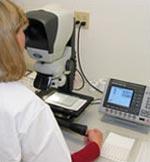ATL, was established in 1951 as a small, family owned printer in Menomonee Falls, Wisconsin, USA. Originally starting out on the production of labels for the industrial and direct mail markets, it has since expanded its markets and product lines to the medical and pharmaceutical industries.
ATL’s ability to achieve and surpass the strict quality standards required by the medical industry led to a natural transition into the pharmaceutical industry in 2001, when the company developed an in-line booklet label from 3 to 19 pages.
Since then, ATL has manufactured more than 120 million pharmaceutical booklet labels in over 80 languages, for more than 1700 clinical trials.
Current good manufacturing practice (cGMP)
In 2003, ATL earned its cGMP (current good manufacturing practice) acceptance as a result of strict compliance to 21 CFR (Code of Federal Regulations) Part 820, for the manufacture, packaging, and storage of disposable medical devices.
ATL also follows cGMP 21 CFR Parts 210 and 211 for the manufacturing, processing, and packaging (for all pharmaceutical label manufacturing). ATL Security Label Systems™, was established in 2007 to provide an advanced new line of labels, offering security and anti-counterfeiting features, including invisible digital forensic marking, track and trace, mass serialization, custom codes, 2D barcodes, color shifting authentication, covert “machine readable” markers, and anti-microbial labels and packaging.
The nature of the customers served by ATL means that the quality of the company’s output is of paramount importance. In addition to the strict adherence to approved organizational and procedural regulations, ATL’s products undergo rigorous quality checks at each stage of design and production.
Boost in accuracy and precision using Kestrel
To help maintain the company’s proud reputation for the excellence of its products, regular investments are made in state-of-the-art inspection equipment.
This commitment to upholding the company’s high quality standards can be illustrated by the recent purchase of an advanced Kestrel 200, optical measuring microscope from Vision Engineering.
ATL Quality Manager Greg Gilanyi explained:
“Although we were previously able to adequately measure die cuts and spacing, along with the location of prints with our existing technology, we felt that this was an area for potential upgrading.”
“Having researched the alternative optical measuring microscopes (and had demonstrations of the most applicable units), we chose Vision Engineering’s Kestrel 200.”
“Our new Vision Engineering microscope delivers fast and accurate 2- axis measurements aiding our precision and speed of operation.”
“Also, the very sharp, high-contrast images provided by the Kestrel’s advanced optics enable our staff to examine work in greater detail. The superior optical image of the unit even allows difficult-to-view features to be measured on low contrast items, such as black or transparent labels.”
ATL President Donald Dobert stated:
“We were looking for a unit that would allow us to expand our FDA cGMP (Current Good Manufacturing Practice) compliance. The Kestrel allows us to measure critical die cuts down to 0.0001 inch.“We constantly perform IQ-OQ-PQ (Installation/ Operational/ Performance Qualifications) in our “Systems Validation Protocol”, and the Kestrel unit provides us with accurate and precise measurement. From this we can determine process Cpk and quantify to our customers our quality in terms of defects per million.”
Instrument repeatability and reproducibility studies
Dobert continued: “We perform instrument Repeatability and Reproducibility studies so we can prove that measurement error does not induce false readings into our validations or Cpk (capability) data.
“I can tell you from my background of more than 30 years in quality, that the Kestrel unit is one of the best devices I’ve ever used.”
With Data processing performed by a QC-200 multi-function microprocessor, the Kestrel 200 was designed to be simple and easy to use, making it ideal for offline quality control routines performed by production staff.
Perfect for measuring 2-D features of small, intricate parts, with a high-precision measuring stage of 6 inches x 4 inches, the Kestrel 200 is the smallest member of Vision Engineering’s optical measurement range.
Kestrel utilizes Vision Engineering’s patented Dynascope™ technology to provide enhanced surface definition for fast and simple measurement. Outstanding optical clarity also allows detailed visual inspection to be performed simultaneously.
No image processing before measurement to ensure accuracy
Unlike video systems which digitise captured optical information, Kestrel employs a pure optical image, meaning that there is no image processing before the measurement, allowing component parts to be measured with confidence.
The Kestrel’s surface and sub-stage illumination options enable adjustment of lighting to suit any application.
Surface illumination is provided by 2 x semi-coaxial spot lamps, with the option for an LED ring light or an episcopic (through the lens) illumination for viewing blind bores or deep surface features. With x20 magnification fitted as standard, further quick-change magnification options of x10, x20 and x50 are available.



